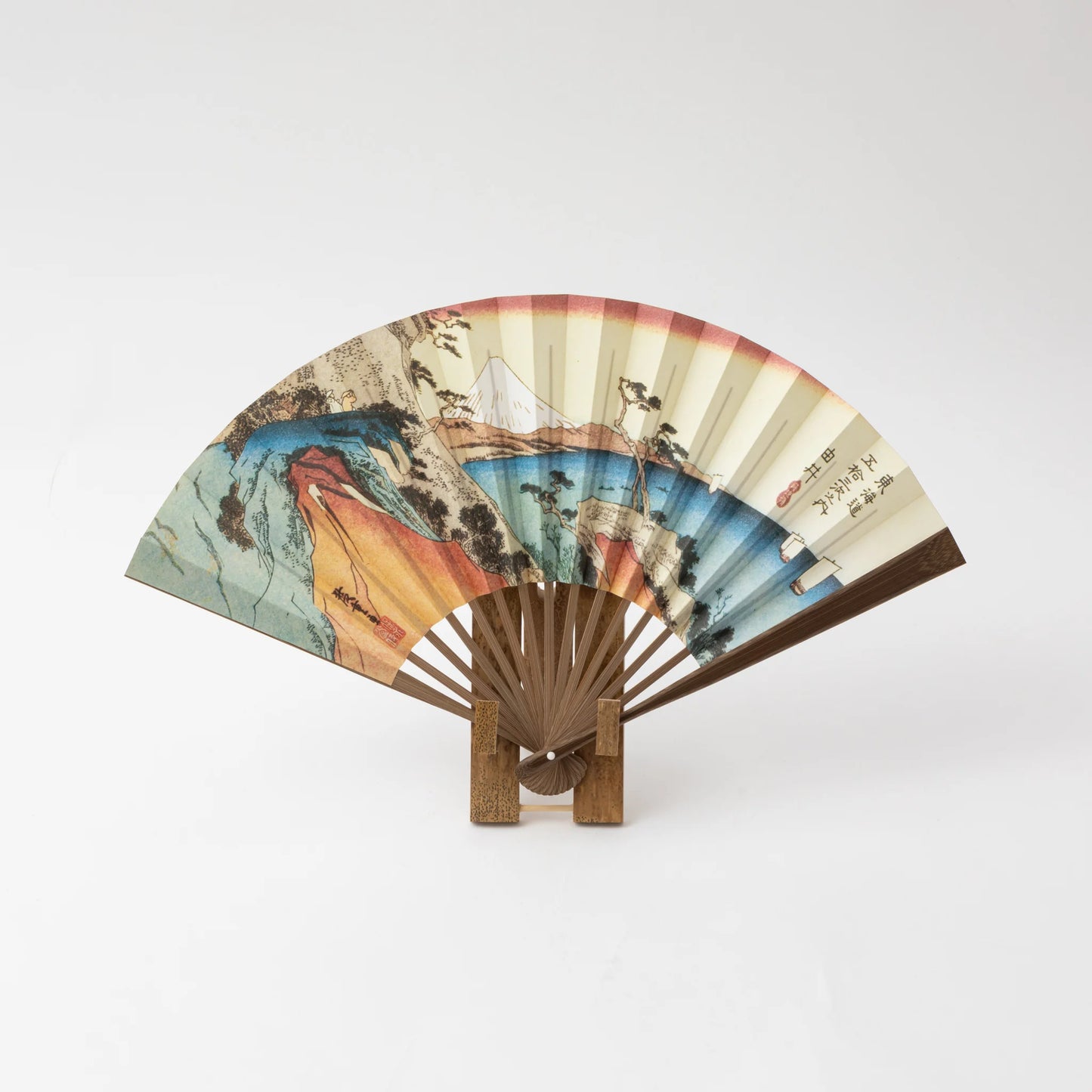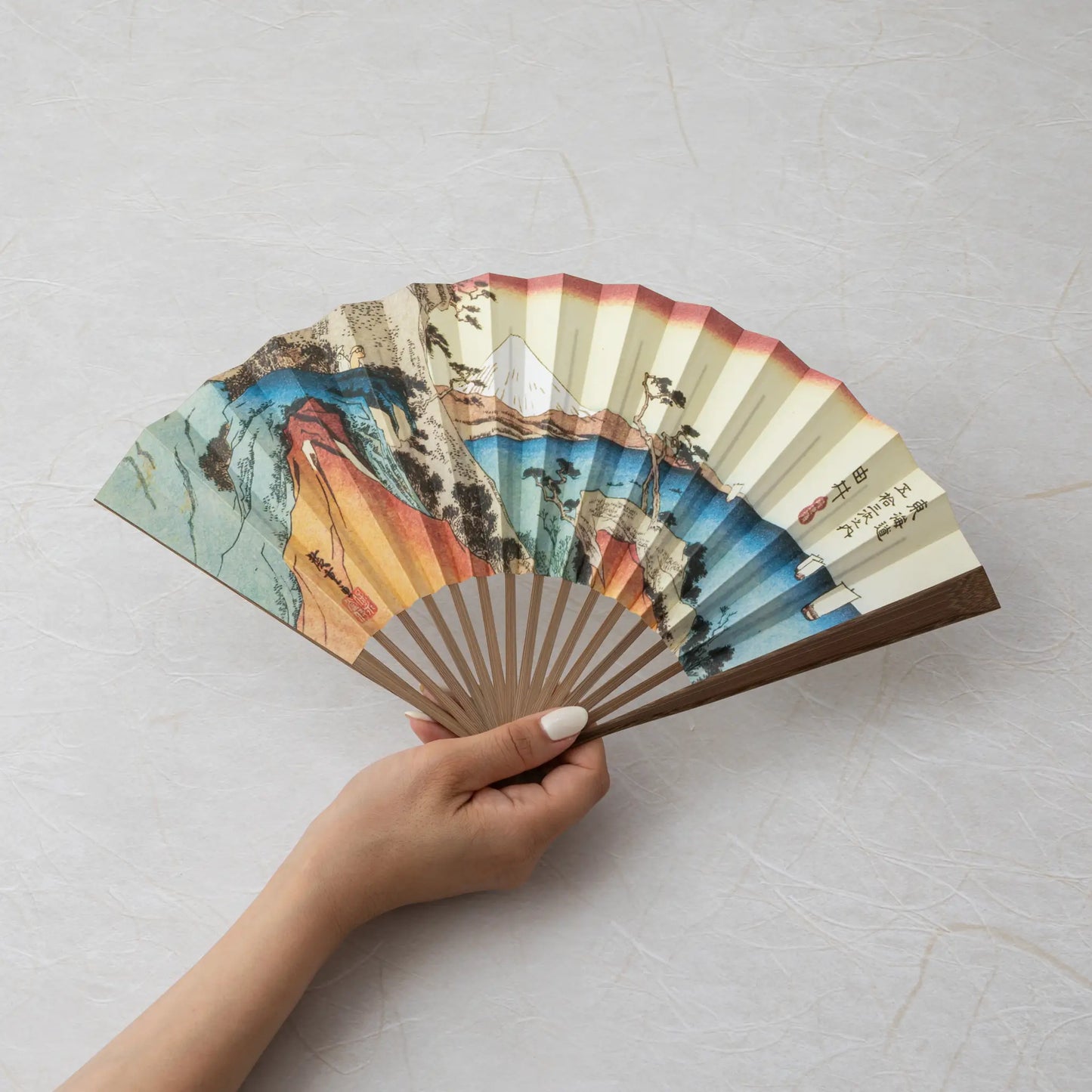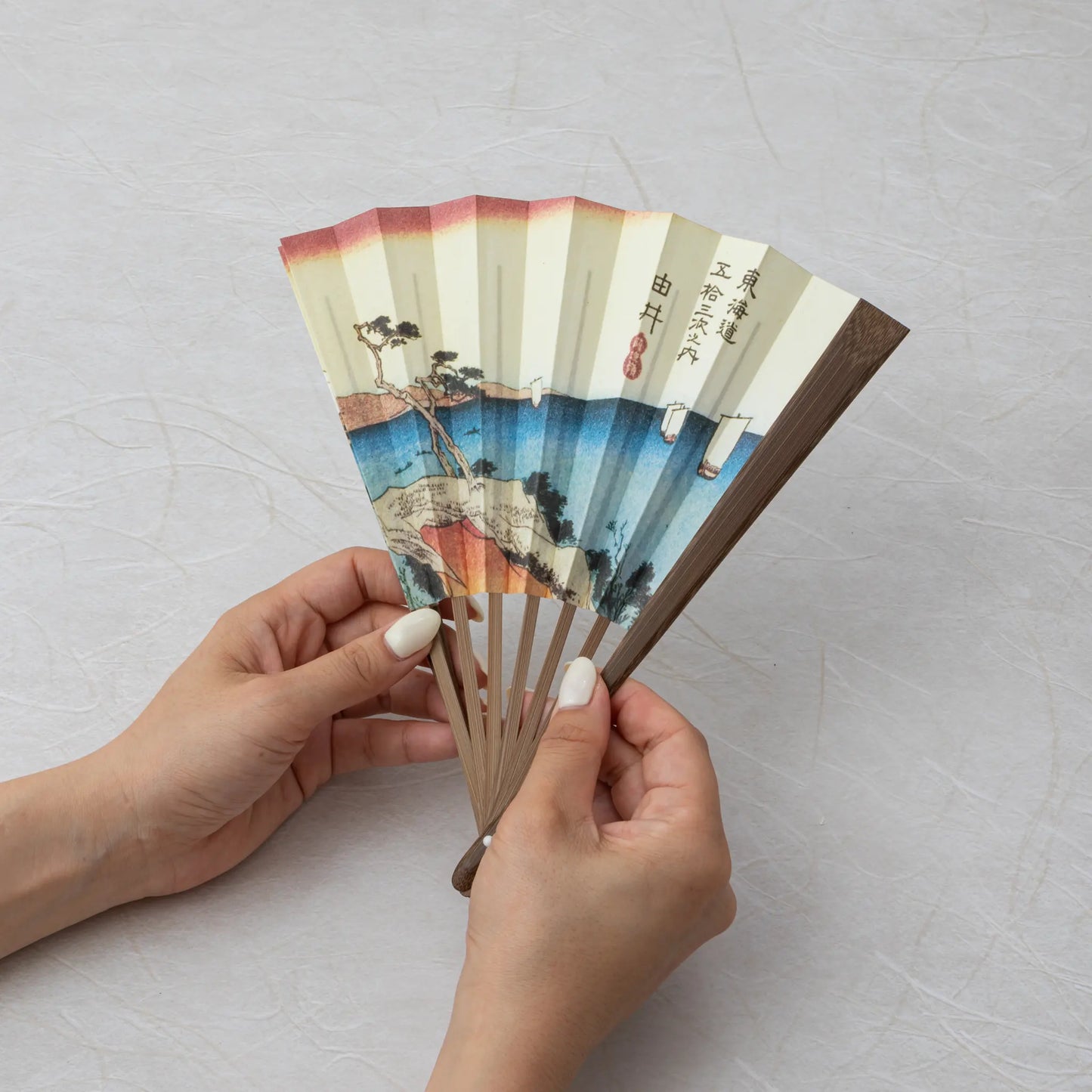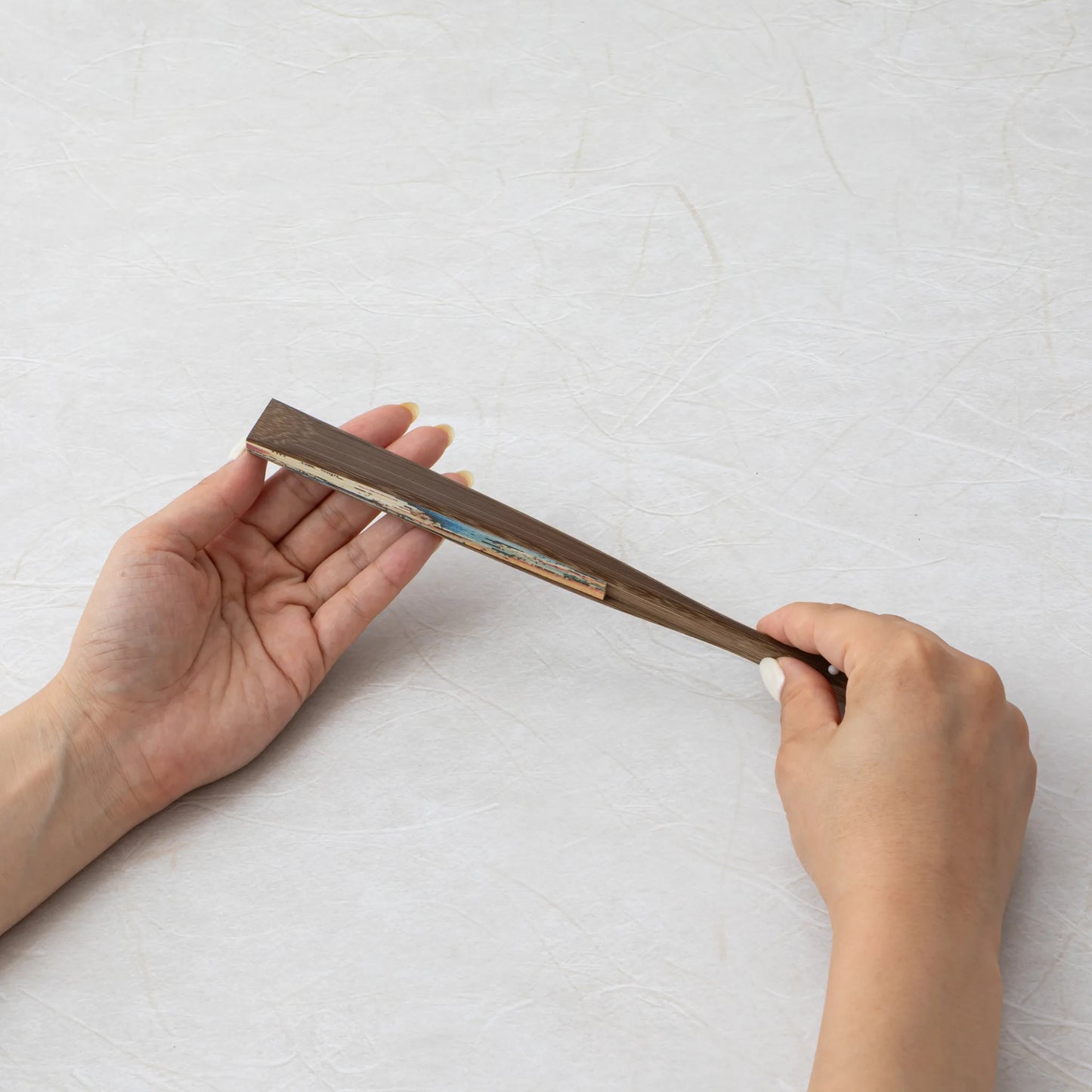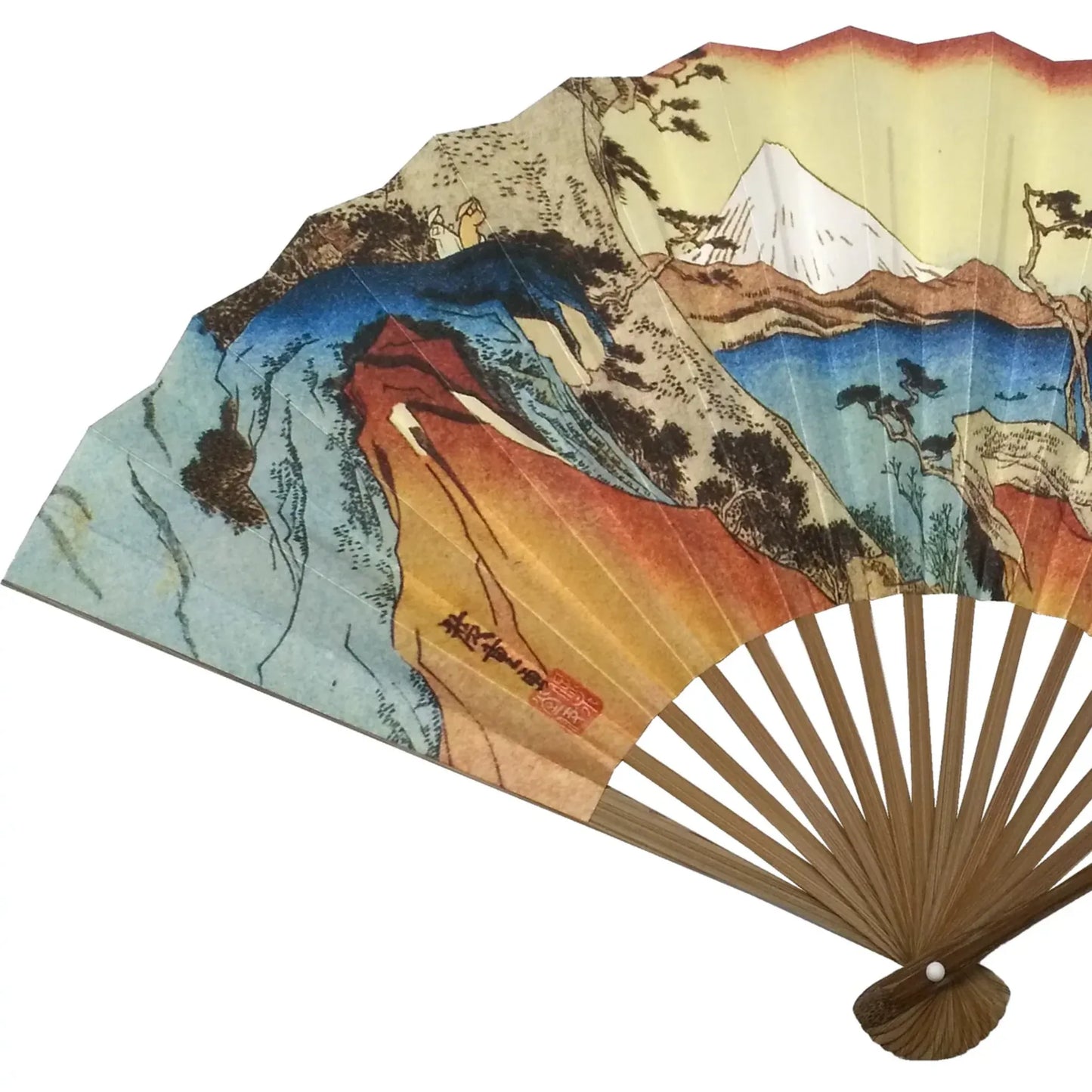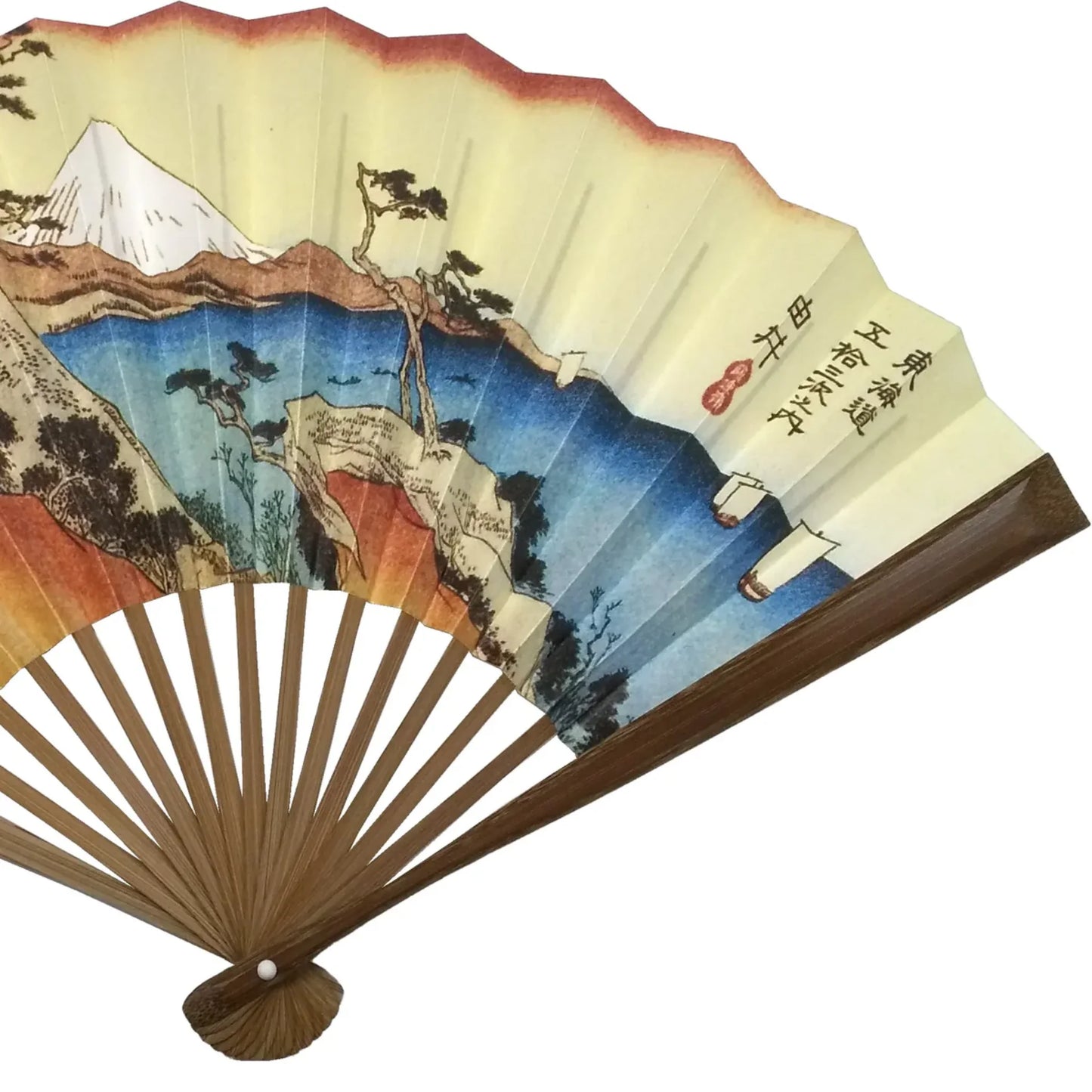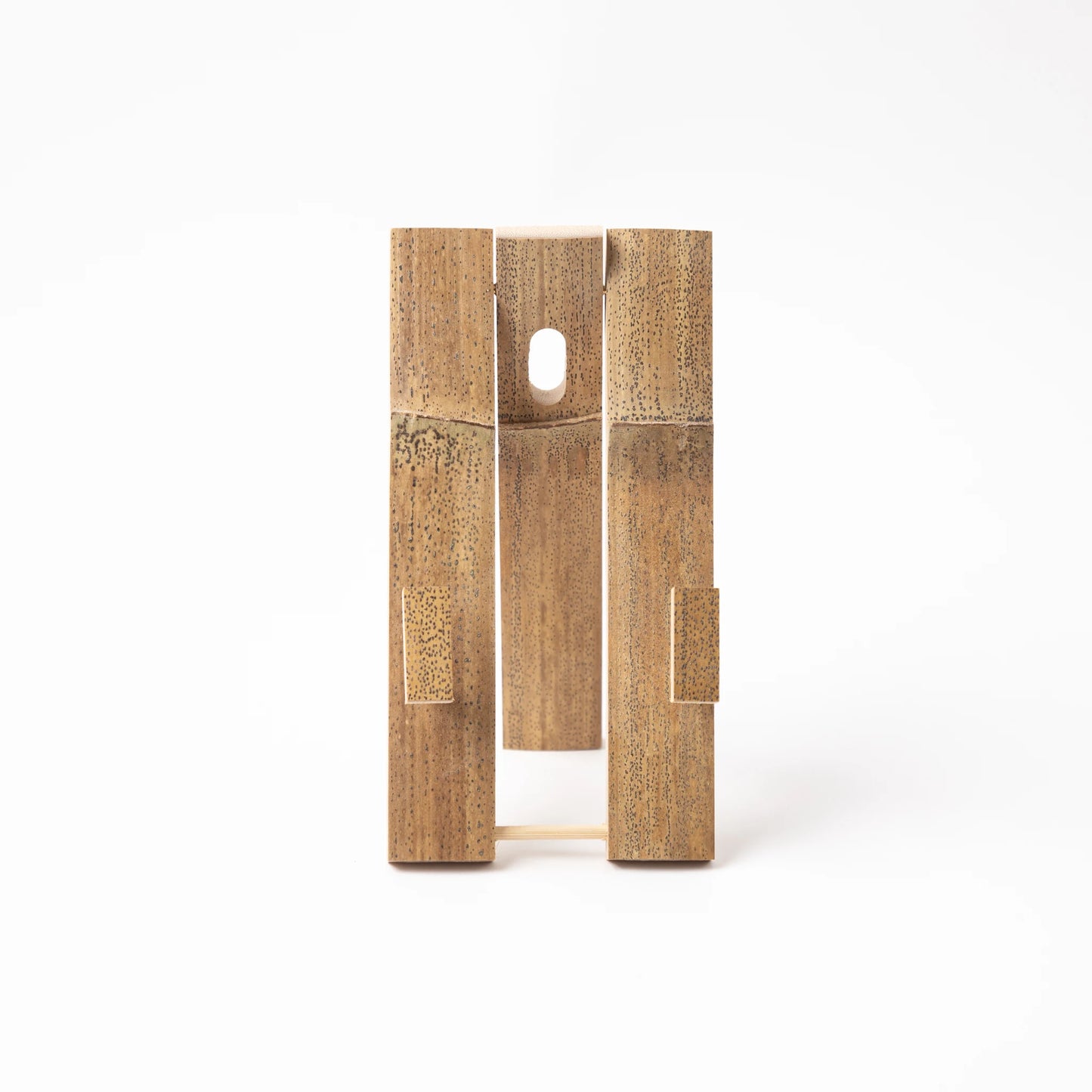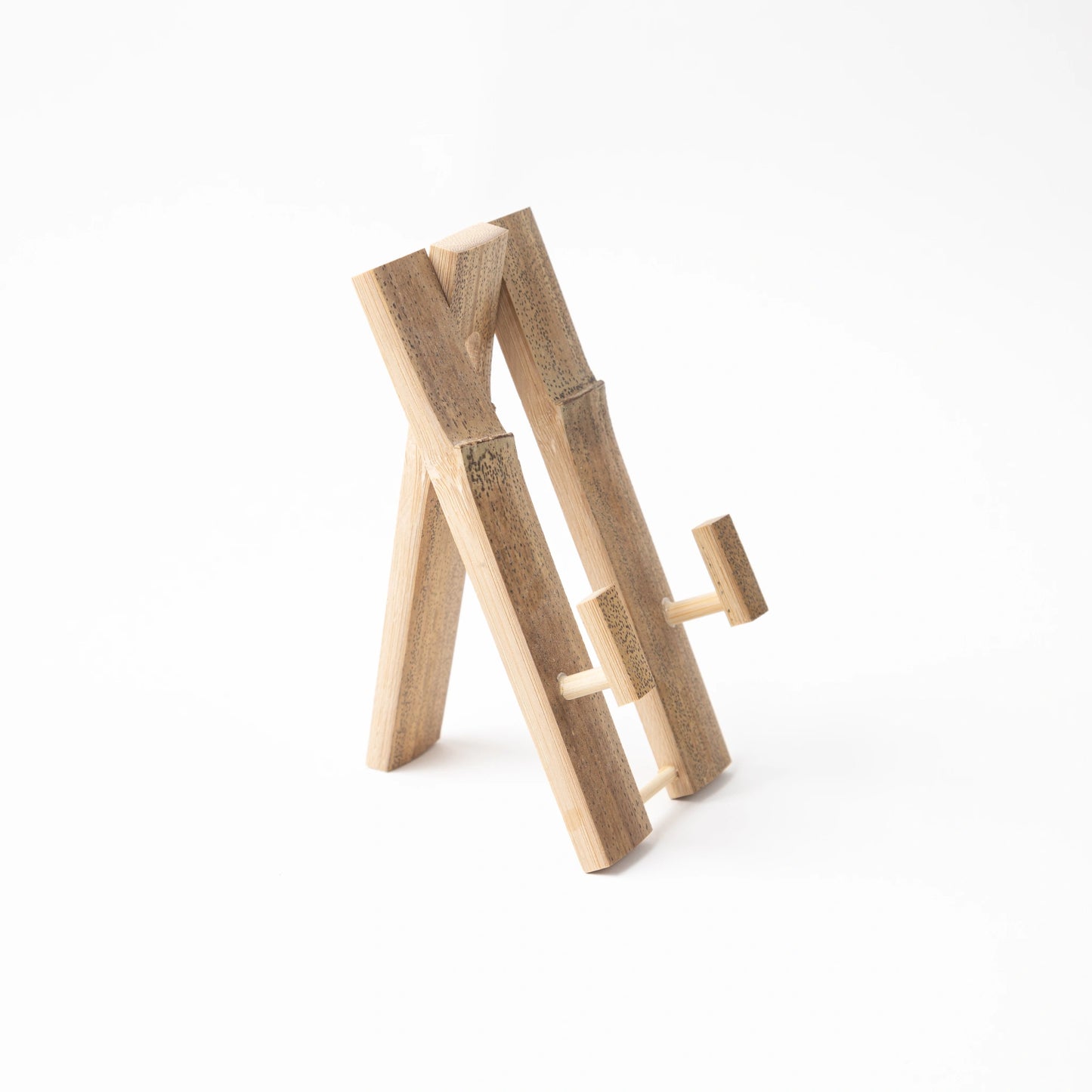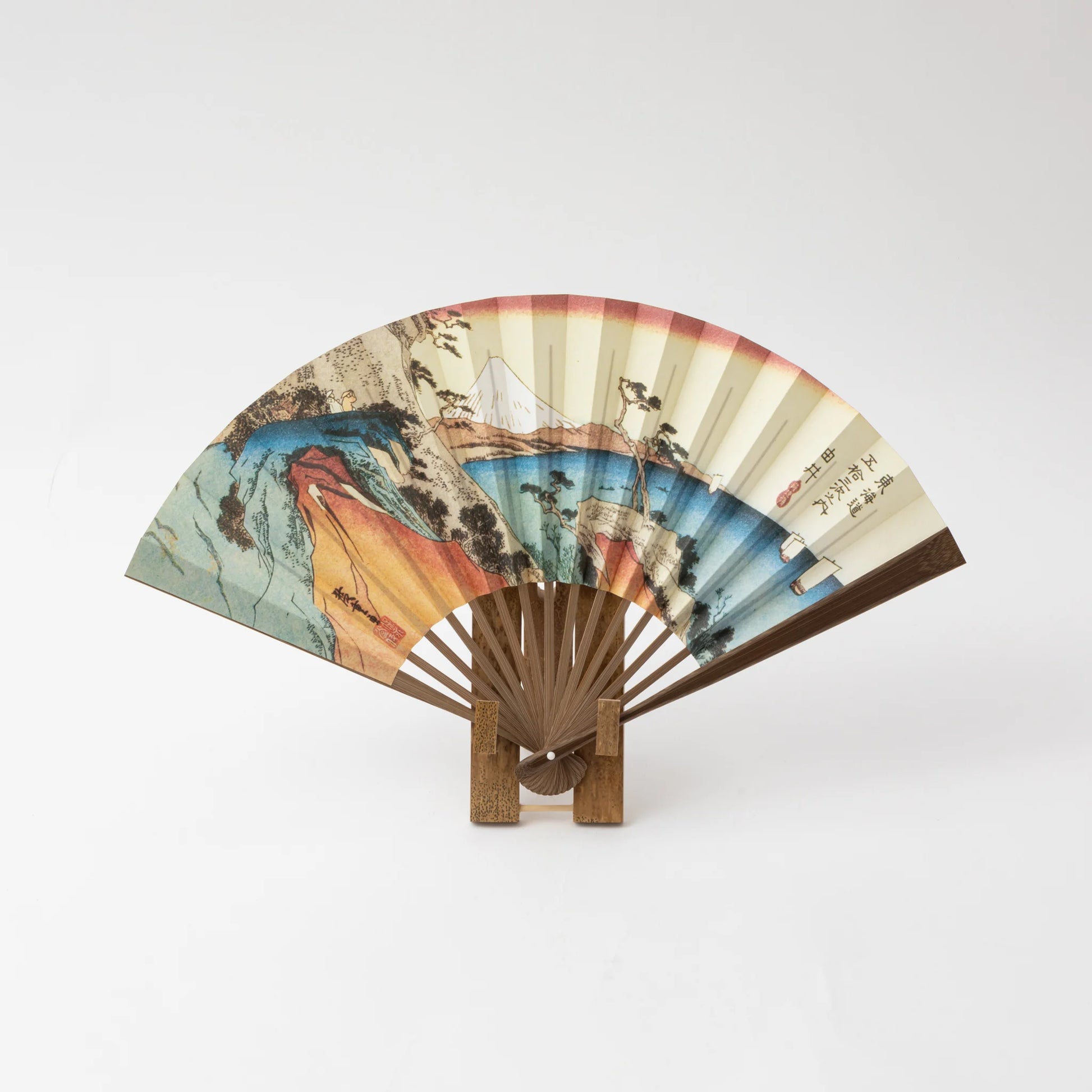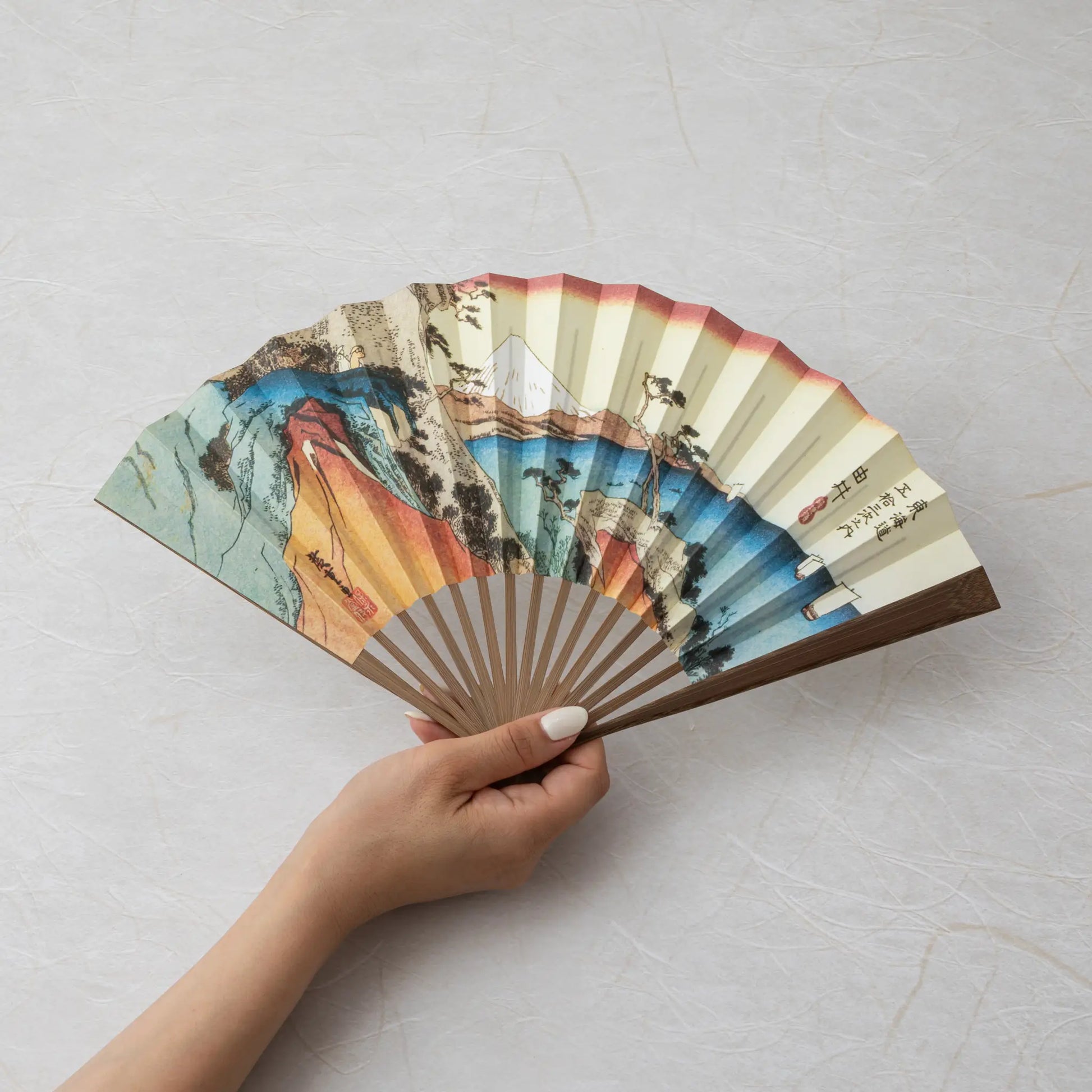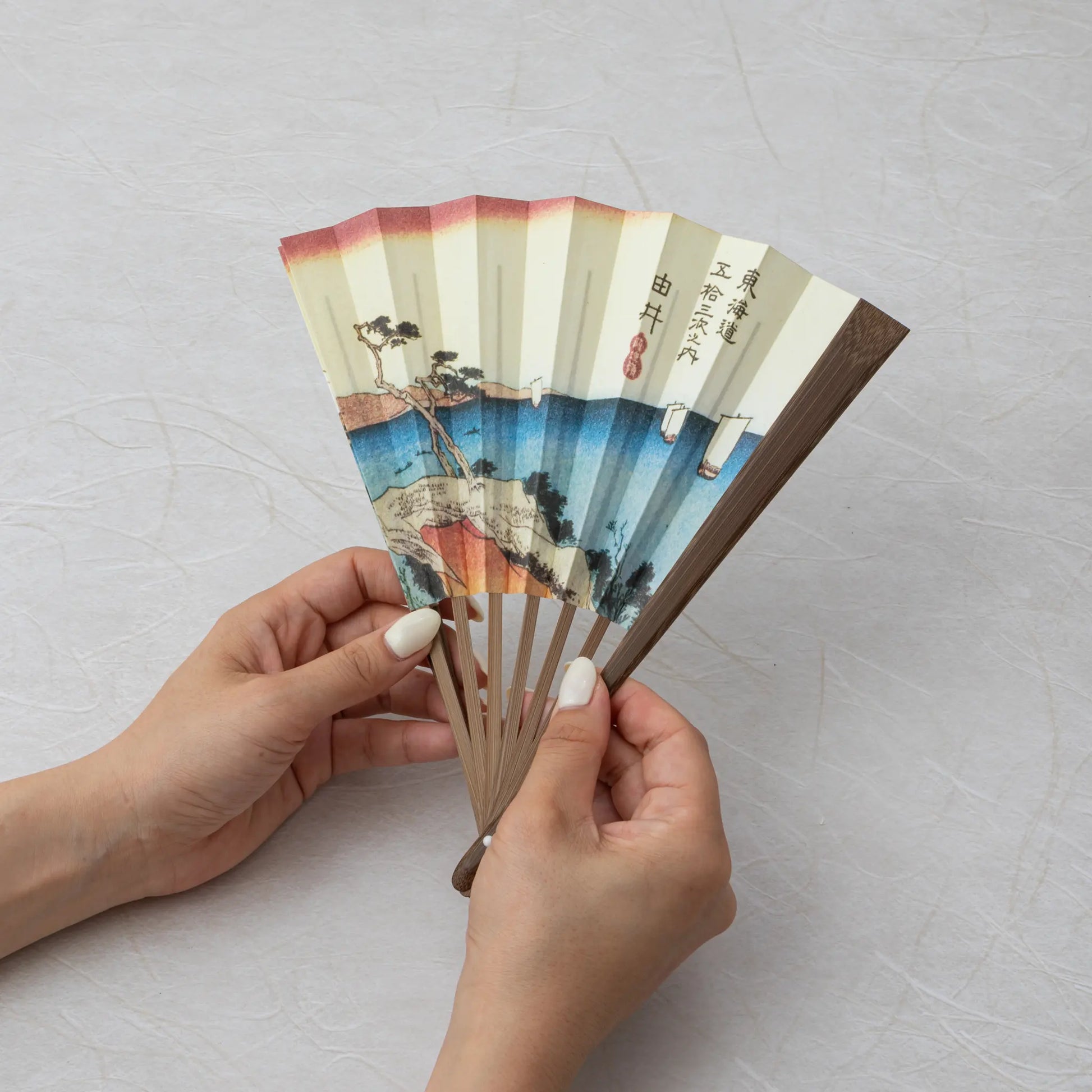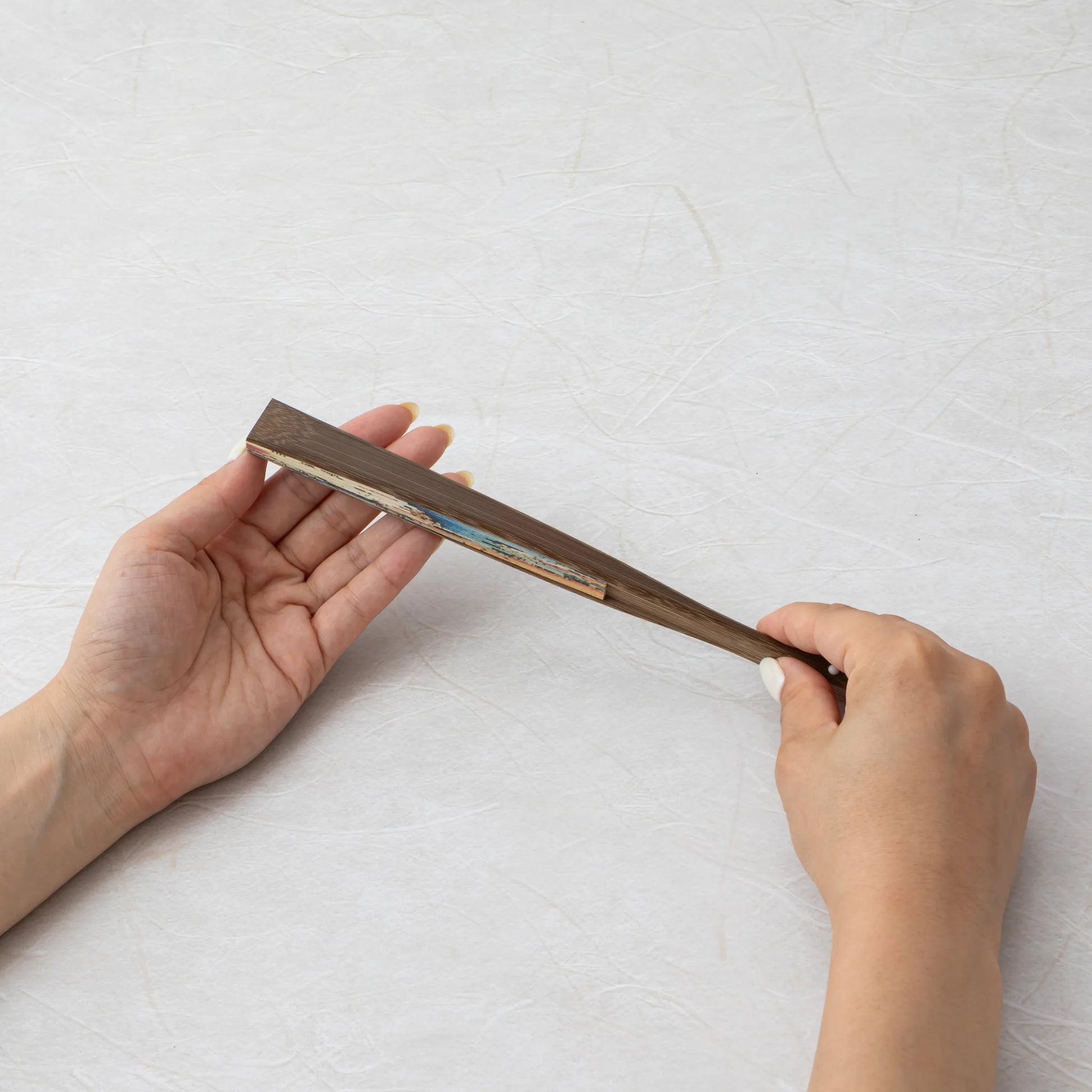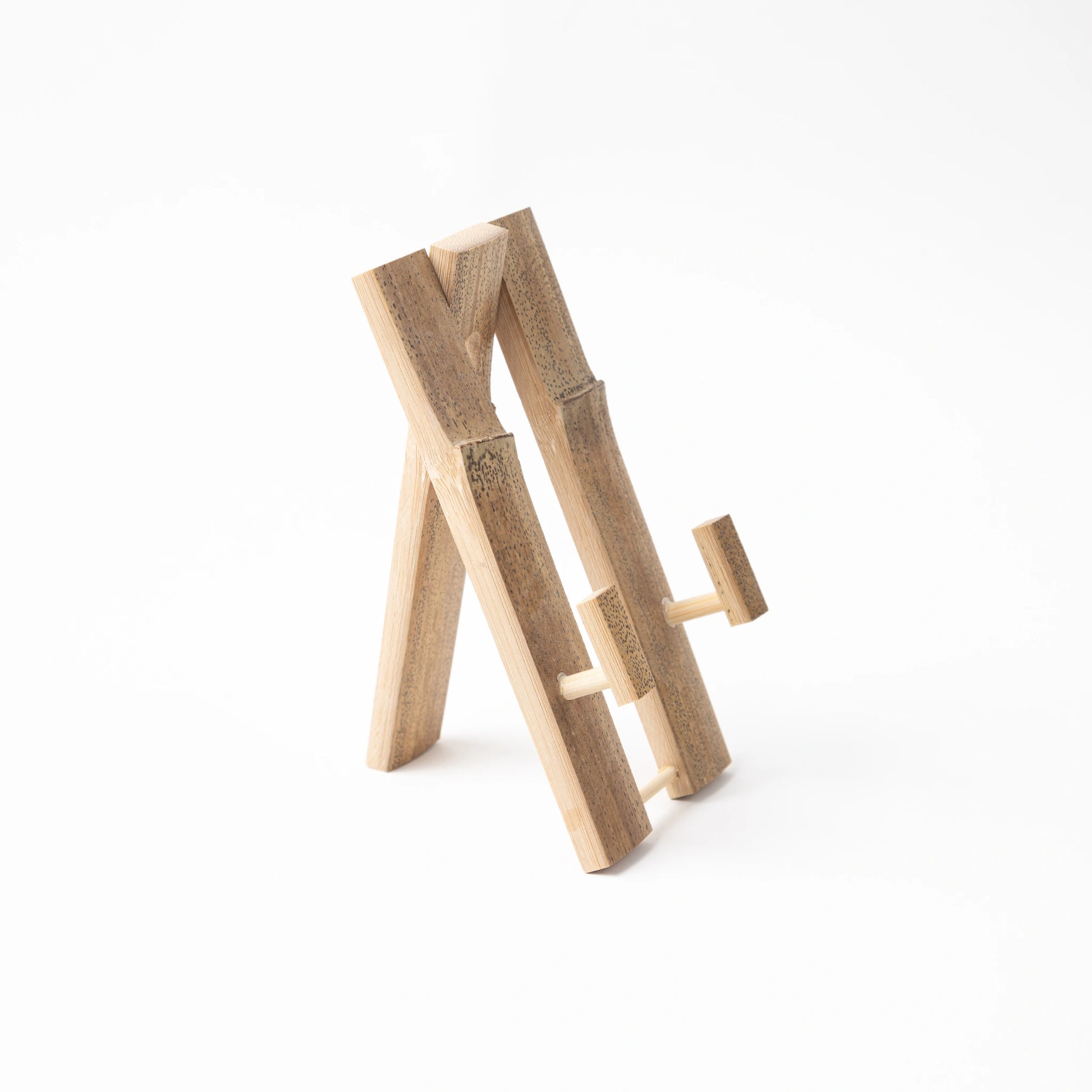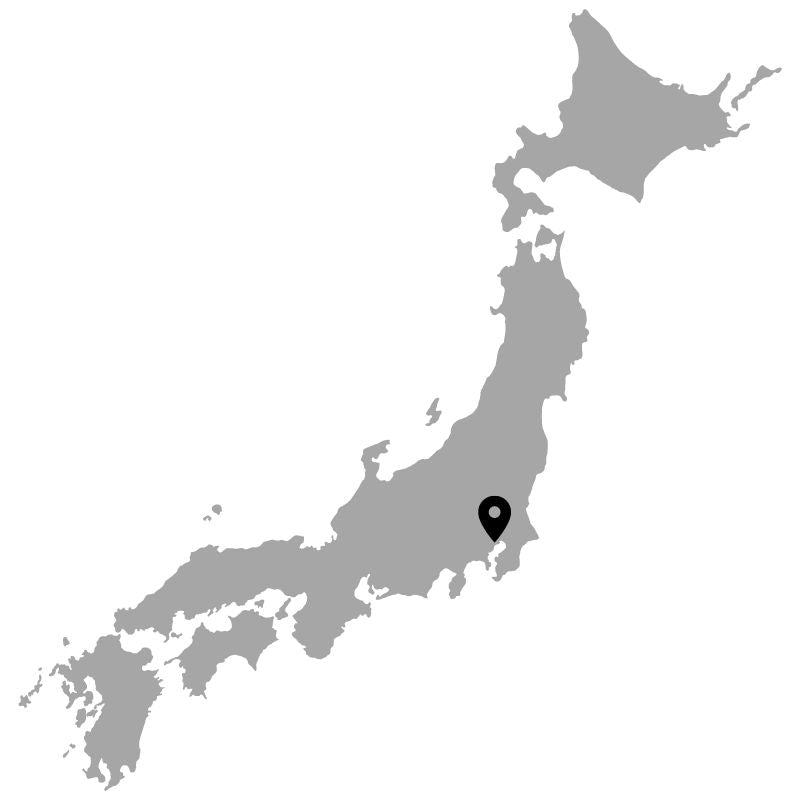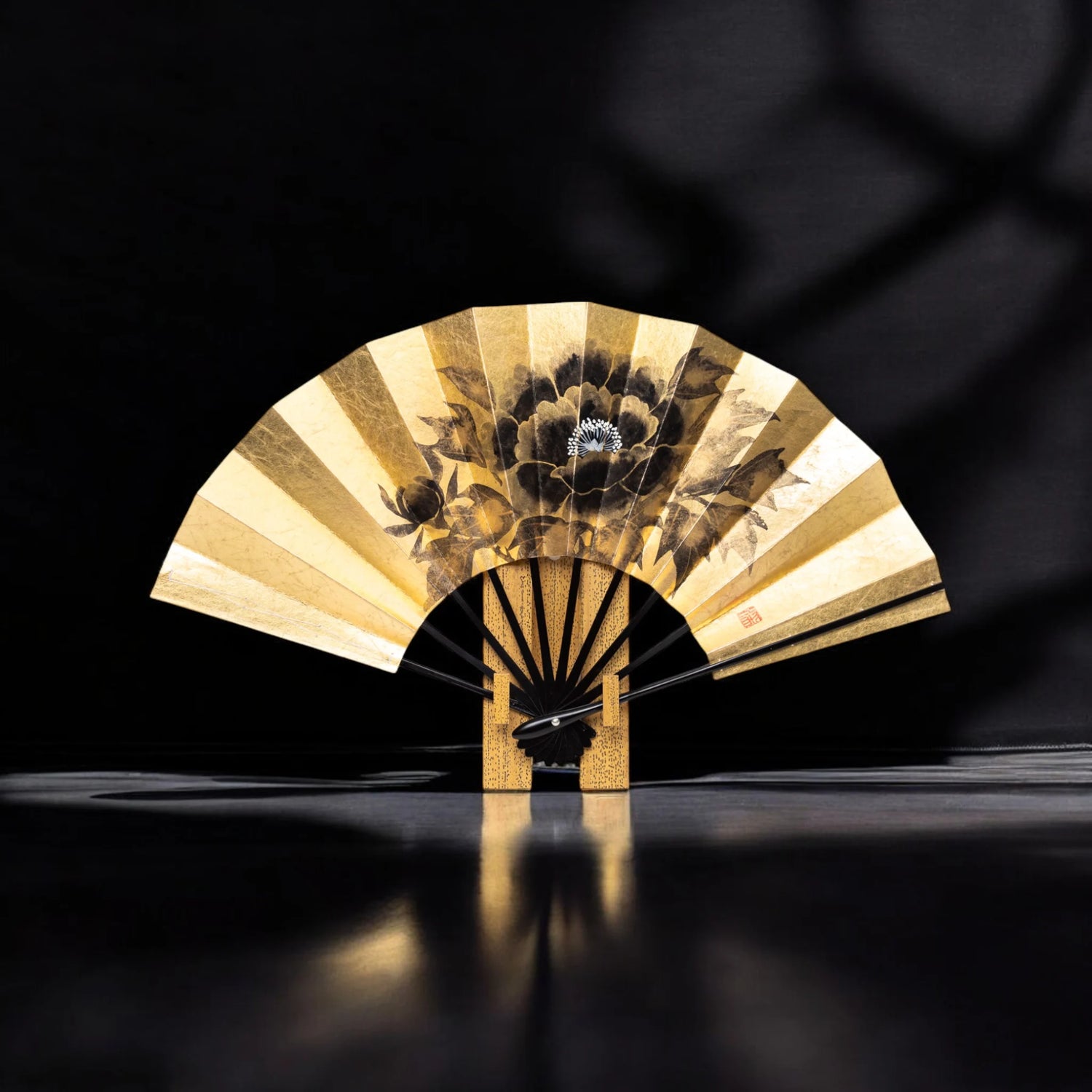Edo Folding Fan Ukiyo-e Utagawa Hiroshige Yui Satta Ridge
Edo Folding Fan Ukiyo-e Utagawa Hiroshige Yui Satta Ridge
Only 1 left in stock
Couldn't load pickup availability
This Edo folding fan by Ibasen features Utagawa Hiroshige’s striking depiction of Yui Satta Ridge from his Fifty-Three Stations of the Tōkaidō series. The artwork portrays the majestic view of Mount Fuji framed by steep cliffs and the surging sea, a scene renowned for its dramatic composition and vivid colors.
Expertly crafted with bamboo ribs, this fan offers both durability and elegance. It comes with a display stand, allowing you to showcase this beautiful piece of Japanese artistry when not in use. Whether as a functional accessory or a decorative element, this folding fan is a captivating homage to Hiroshige's mastery of ukiyo-e and Japan's scenic landscapes.
Detail
Detail
Care & Use
Care & Use
- Check our tips for care & use.
